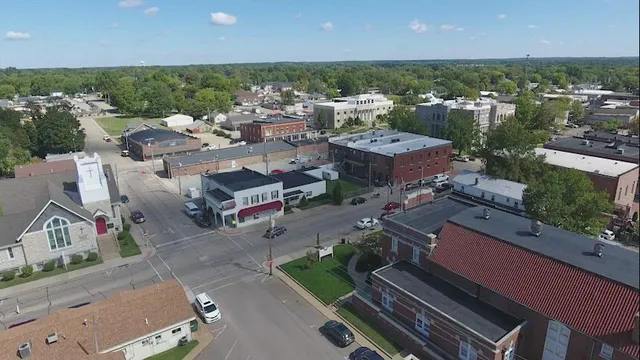by Jacob Goff, originally published in SFH newszine Issue #2
I’m continuing through Chuck Marohn’s book, Strong Towns. It is changing my brain and I’m beginning to try to “think like a city.” My approach since being involved with small-town retail businesses has always been to think like a business. I think eventually cities would adopt a more “think like a business” approach, which will likely be forced upon them by a failing dollar, but in a more relational sense: I believe eventually cities will learn to rely on transparent collaboration rather than sneaky powergrabs. I think the internet, and decentralized information generally, will make honesty’s efficiency much more clear to the stakeholders, the skin-in-the-game citizens and residents of our towns and our county.

“Modern city-building efficiently creates pods of static, monoculture development. As ecosystems, monocultures are inherently fragile. The fragility of the American development paattern is amplified by the unnatural statis imposed: the inability to adapt to changing circumstances.
When we build a neighborhood all at once to a finished state, we have — at best — a moment of perfection, a period of time when everything works aasa envisioned. But even in the most perfect development, an unavoidable, yet entirely predictable, stress looms.
The homes were all built at the same time; they will all reach the end of their life cycle at the same time. Within the lifetime of the mortgage debt for the home, the homes in the neighborhood will simultaneously start to fail.
An asphalt-shingled roof will last for 25 to 30 years, and then it will need to be replaced. Because they were all built at the same time, every home in the neighborhood will need a new roof within a few years of each other. Failure to maintain the roof has serious consequences; a modern chipboard and sheetrock home will go bad quickly with a failed roof.
The siding of every home in the neighborhood will also fail at roughly the same time. Everyone’s appliances will go bad within a few years of each other. The sidewalks and driveways will crack and be overgrown with weeds, all at the same time. Building a neighborhood all at once, instead of incrementally, merely ensures that all the inevitable pressures of decline will occur simultaneously across the entire neighborhood.
And because the neighborhood is built to a finished state, because no higher use is anticipated or even allowed on the property, the only available options are stagnation and decline. In the best-case scenario, the buildings will be maintained as they are, regardless of the cost or return on investment for doing so, and the neighborhood will stagnate, not improving but not getting worse.
The more likely scenario is that, as the signs of decline start to become apparent, the more affluent in the neighborhood will move. They will do the logical thing and sell their home in the declining neighborhood and purchase another in a neighborhood they perceive to be a better investment. That will leave people will less financial means to struggle to maintain homes within a deteriorating neighborhood.
Ultimately the relentless pressure of time and entropy will push the neighborhood into decline. It may take a few years or a few decades, but all possible futures converge on the sole remaining outcome: decline. It’s like treading water, a binary set of outcomes — stagnation or decline — and there is no easy path back once the cycle of decline is established.”
///
Marohn is on a war path. I’ve been reading him for five years and in that time have not made myself aware of the business behind how our city is/was built. As I progress throughout the book, I hope that I can also draw in some more relevant details about local st. francois county and surrounding towns and see if one city is much closer to a Strong Towns-style development pattern. Farmington is the county seat and, seems like, the richest town in sfc so I like the idea of it being a leader in a better pattern of development — but I fear that the reasons we think of it as rich might reflect how bought in they are on a certain style of unsustainable development.
There is a throughline between sustainable city design, regenerative agricultural, transparent politics, and accessible business mentorship. Farmington and surrounding towns need to refocus on these things and forget attracting mega-chains and warehouse grocery stores.
